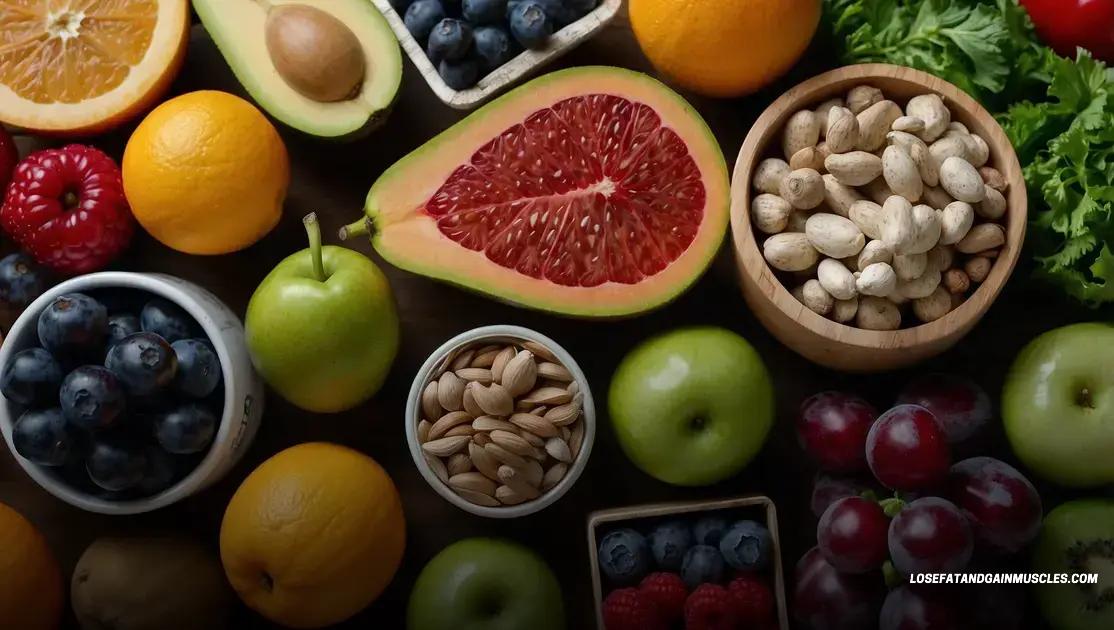How Do You Keep a Flat Stomach While Bulking? Tips You Need!
To keep a flat stomach while bulking, focus on a moderate caloric surplus, prioritize lean protein intake, and engage in a mix of strength training and cardiovascular exercises. Regularly monitor your progress and adjust your strategy to minimize fat gain effectively.
How do you keep a flat stomach while bulking? It’s a common concern for fitness enthusiasts and beginners alike. The good news is that with the right approaches, you can bulk up without sacrificing your lean appearance. In this article, we will delve into essential tips, from nutritional guidelines to effective workouts, ensuring you gain muscle while minimizing belly fat. Join us as we explore how to achieve this balance and maintain a flat stomach throughout your bulking journey.
Understanding Lean Bulking and Its Importance
Understanding Lean Bulking is crucial for anyone looking to gain muscle without excessive fat gain. This method involves a strategic approach to increase muscle mass while minimizing fat accumulation. Unlike traditional bulking, which often leads to extra calories and unwanted body fat, lean bulking focuses on a balanced intake that promotes healthy weight gain.
The Importance of Lean Bulking
Lean bulking is important for several reasons. First, it helps maintain a flat stomach while you build strength. By consuming wholesome foods and proper macronutrients, you can support muscle growth without the risk of excessive belly fat.
Secondly, lean bulking promotes a healthier body composition. This means more muscle and less fat, improving overall performance in workouts. It also supports better metabolic health, ensuring your body efficiently processes what you eat.
Finally, lean bulking enables sustainable weight management. By focusing on lean gains, you’re less likely to experience drastic weight fluctuations, which can lead to frustration and unhealthy habits.
In short, understanding and applying the principles of lean bulking is essential for achieving your fitness goals, particularly if you want to keep a flat stomach while bulking.
Key Nutritional Guidelines for Bulking

When focusing on bulking, it’s essential to follow key nutritional guidelines to ensure healthy weight gain. These steps will help you bulk effectively while keeping a flat stomach.
1. Calculate Your Caloric Needs
The first step in the bulking process is to determine your daily caloric needs. This means finding out how many calories you burn each day and adding around 250-500 calories to that number. This surplus will promote muscle gain while minimizing fat gain.
2. Prioritize Protein Intake
Protein is crucial for muscle recovery and growth. Aim for 1.2 to 2.2 grams of protein per kilogram of body weight. Foods like chicken, fish, eggs, legumes, and dairy can help you meet this goal.
3. Incorporate Healthy Carbohydrates
Carbohydrates are your body’s main energy source, especially during workouts. Opt for complex carbs like brown rice, quinoa, oats, and whole grains. They provide long-lasting energy and aid in recovery without causing blood sugar spikes.
4. Include Healthy Fats
Fats are also essential for hormone production and overall health. Incorporate sources of healthy fats like avocados, nuts, seeds, and olive oil into your diet. Aim for about 20-30% of your total daily calories from these fats.
5. Stay Hydrated
Don’t forget the importance of hydration! Drinking enough water supports digestion and nutrient absorption. Aim for at least 8-10 cups of water daily, especially on days when you work out.
By following these nutritional guidelines, you can effectively bulk up while keeping a flat stomach and minimizing fat gain.
Effective Exercise Regimens for a Flat Stomach
To keep a flat stomach while bulking, it is important to follow effective exercise regimens. Combining strength training with cardiovascular workouts can help you build muscle while minimizing fat gain.
1. Strength Training
Focusing on total-body strength training is key. Aim for 3-4 sessions per week, incorporating compound movements like squats, deadlifts, and bench presses. These exercises engage multiple muscle groups, promoting muscle growth and a strong core.
2. Core Exercises
Core workouts are essential for a flat stomach. Include exercises like planks, Russian twists, and bicycle crunches in your routine. Perform these exercises 2-3 times a week to strengthen your abdominal muscles.
3. Cardiovascular Workouts
Incorporate cardiovascular exercise to help burn calories and promote fat loss. Aim for at least 150 minutes of moderate cardio each week. Activities like jogging, swimming, or cycling can be effective and enjoyable.
4. Interval Training
High-Intensity Interval Training (HIIT) is another excellent option. This involves short bursts of intense exercise followed by rest. HIIT workouts can efficiently burn fat while preserving muscle mass.
5. Flexibility and Recovery
Don’t forget to include flexibility exercises and rest days. Stretching helps with muscle recovery and prevents injuries, which is crucial when you’re following a rigorous exercise regimen.
By consistently following this balanced approach that integrates strength training, core workouts, and cardio, you can achieve a toned physique and maintain a flat stomach throughout your bulking phase.
Tips to Minimize Fat Gain While Bulking

Minimizing fat gain while bulking is essential for achieving a flat stomach and staying healthy. Here are some effective tips to help you manage fat gain during your bulking phase:
1. Set a Moderate Caloric Surplus
Instead of a large caloric surplus, aim for a moderate increase of about 250-300 calories above your maintenance level. This will allow muscle growth while reducing the chance of gaining excess fat.
2. Choose Nutrient-Dense Foods
Focus on nutrient-dense foods that provide vitamins, minerals, and healthy macronutrients. Foods like lean meats, whole grains, fruits, and vegetables will fuel your body without empty calories.
3. Monitor Portion Sizes
Even with healthy foods, portion sizes matter. Be mindful of your serving sizes and avoid overeating, as this can lead to unwanted fat gain.
4. Prioritize Protein
Getting enough protein is crucial. Aim for 1.2-2.2 grams of protein per kilogram of body weight. This will help preserve muscle while limiting fat accumulation.
5. Stay Active Outside the Gym
Incorporate more physical activity into your daily routine. Simple changes like walking more, taking the stairs, or participating in active hobbies can help burn extra calories.
6. Limit Sugary and Processed Foods
Minimize the intake of sugary snacks and processed foods. These can lead to fat gain, especially around the belly area, and provide little nutritional value.
7. Track Your Progress
Regularly check your weight and body measurements to track your progress. Adjust your food intake and workout routine accordingly to maintain your goals.
By following these tips, you can effectively minimize fat gain while bulking, helping you achieve your fitness goals and maintain a flat stomach.
Monitoring Progress and Adjusting Your Strategy
Monitoring progress while bulking is vital to ensure you are on track to achieving a flat stomach and muscle gains. Here are some effective strategies for tracking your progress and adjusting your strategy as needed:
1. Keep a Food Diary
Tracking what you eat can help you understand your caloric intake and nutrient balance. Use a food diary or an app to log your meals. This will help you stay accountable and make necessary adjustments to your diet.
2. Measure Body Composition
Instead of just focusing on the scale, consider measuring your body composition. Use calipers, a scale that measures body fat, or a body composition analyzer. This will give you a clearer picture of your muscle versus fat gain.
3. Take Weekly Progress Photos
Taking photos can help you visually track changes in your body. Take clear pictures in consistent lighting and similar clothing every week. Side-by-side comparisons will show your progress over time.
4. Adjust Macronutrient Ratios
If you notice unwanted fat gain, evaluate your macronutrient ratios. Consider increasing protein while reducing carbohydrates or fats slightly. Fine-tuning your diet can help you stay leaner while bulking.
5. Track Workout Performance
Keep a log of your workouts. Regularly monitor increases in weight lifted, reps, and sets. Improved performance often indicates muscle growth, while stagnation could mean you need to adjust your strategy.
6. Set Specific Goals
Establish clear, achievable goals. For example, you might aim to gain a specific amount of muscle in a certain time frame. Make sure to revisit these goals regularly and adjust them based on your progress.
By actively monitoring your progress and adjusting your strategy accordingly, you can effectively bulk while maintaining a flat stomach and minimizing fat gain.
Wrap-Up: Achieving Your Goals While Keeping a Flat Stomach
Bulking while maintaining a flat stomach is achievable with the right approach. By focusing on lean bulking principles, following key nutritional guidelines, and committing to effective exercise regimens, you can gain muscle without excessive fat gain.
Implementing tips to minimize fat gain, regularly monitoring your progress, and adjusting your strategy will keep you on track. Remember that patience and consistency are key in your fitness journey.
With dedication and the right mindset, you can enjoy the benefits of bulking while achieving your goal of a flat stomach and improved physique. Stay committed, track your progress, and adjust as necessary for the best results.
FAQ – Frequently Asked Questions about Bulking and Maintaining a Flat Stomach
Can I bulk up and still maintain a flat stomach?
Yes, with the right approach to diet and exercise, it’s possible to gain muscle while minimizing fat gain and maintaining a flat stomach.
What are the best foods to include during a bulking phase?
Focus on nutrient-dense foods like lean proteins, whole grains, fruits, and vegetables while avoiding sugary and processed foods.
How can I limit fat gain while bulking?
Aim for a moderate caloric surplus, track your food intake, and prioritize protein while including regular physical activity.
What types of exercises should I include in my routine?
Incorporate strength training, core exercises, and cardiovascular workouts to build muscle and help keep excess fat at bay.
How often should I monitor my progress?
Regular monitoring is essential; aim to track your progress weekly or biweekly through measurements, photos, and workout logs.
What should I do if I notice fat gain while bulking?
If you notice fat gain, evaluate your diet, adjust your caloric intake, and reevaluate your workout routine to increase activity levels.













